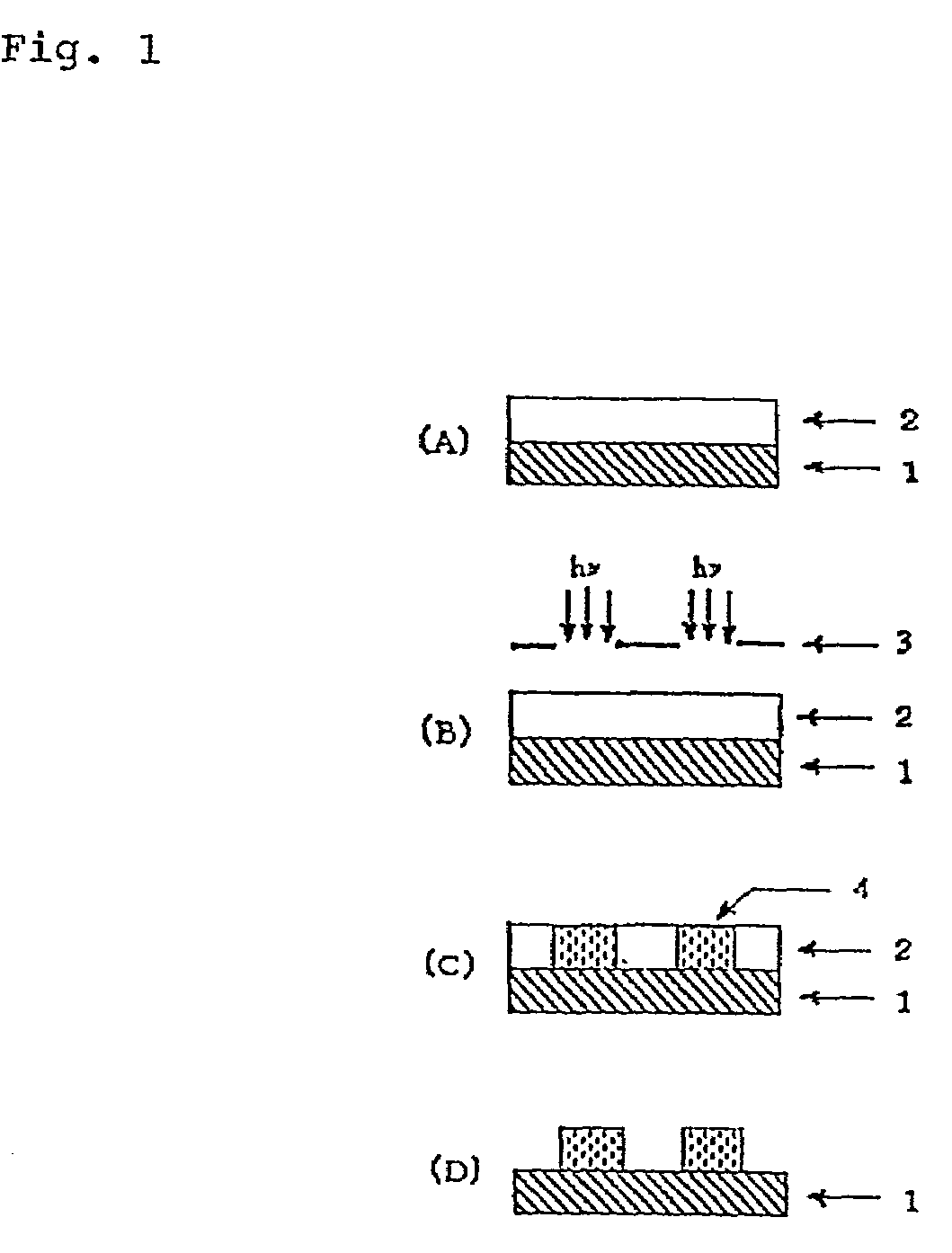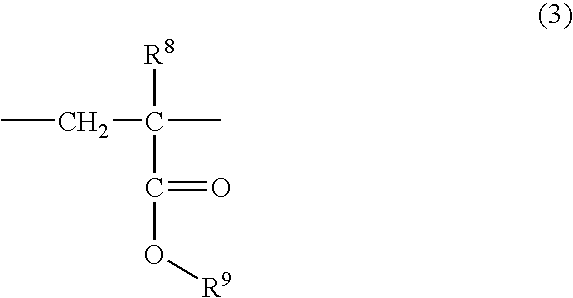(Meth) acrylate derivative, polymer and photoresist composition having lactone structure, and method for forming pattern by using it
a technology of acrylate derivative and polymer, which is applied in the field of (meth) acrylate derivative, can solve the problems of short life span of laser gas raw material, inability to form fine resist patterns, and high cost of laser apparatus, and achieve excellent transparency and etching resistance.
- Summary
- Abstract
- Description
- Claims
- Application Information
AI Technical Summary
Benefits of technology
Problems solved by technology
Method used
Image
Examples
example 1
[0057]Synthesis of 5-acryloyloxy-2,6-norbornanecarbolactone [an acrylate having the formula (1) in which R1 and R2 are hydrogen atoms:
[0058]
[0059]10 g (0.0653 mol) of 5-hydroxy-2,6-norbornanecarbolactone [H. B. Henbest et al., J. Chem. Soc., p. 221–226 (1959)], 9.49 g of N,N-dimethylaniline and 20 mg of phenothiazine were dissolved in 60 ml of dry THF, followed by ice-cooling. To the mixture, a solution obtained by dissolving 6.5 g of acryloyl chloride in 10 ml of dry THF was added dropwise. After stirring for 2 hours under ice-cooling and for 3 hours at room temperature, a filtrate was concentrated under reduced pressure. Afterward, 250 ml of ether were added to the resultant residue, and the solution was then washed with 200 ml of 0.5 N hydrochloric acid, saturated brine, 200 ml of an aqueous 3% NaHCO3 solution, saturated brine and water in this order. The ether layer was dried over MgSO4, and ether was then distilled off under reduced pressure. The precipitated white crystals wer...
example 2
[0061]Synthesis of 5-methacryloyloxy-2,6-norbornanecarbolactone [a methacrylate represented by the formula (1) wherein R1 is a methyl group and R2 is a hydrogen atom]:
[0062]
[0063]The desired product was synthesized by the same procedure as in Example 1 except that acryloyl chloride was replaced with methacryloyl chloride (yield=20%).
[0064]1H-NMR (CDCl3) δ 1.62 (1H, d), 1.75 (1H, d), 1.92 (3H, s), 1.95–2.16 (2H, m), 2.53–2.66 (2H, m), 3.20–3.28 (1H, m), 4.59 (1H, d), 4.65 (1H, s), 5.62 (1H, dd), 6.10 (1H, dd); IR (KBr) 2880, 2982 (νC—H), 1715, 1780 (νC═O), 1630 (νC═C), 1156, 1178 (νC—O) cm−1
example 3
[0065]Synthesis of 2-methyl-6-acryloyloxy-2,6-norbornanecarbolactone [an acrylate represented by the formula (1) wherein R1 is a hydrogen atom and R2 is a methyl group]:
[0066]
[0067]The desired product was synthesized by the same procedure as in Example 1 except that 5-hydroxy-2,6-norbornanecarbolactone was replaced with 6-hydroxy-2,6-norbornanecarbolactone [S. Beckmann et al., Chem. Ber., Vol. 94, p. 48–58 (1961)] (yield=30%).
[0068]IR (KBr) 2880, 2982 (νC—H), 1716, 1774 (νC═O), 1619, 1629 (νC═C), 1188, 1208 (νC—O) cm−1
PUM
| Property | Measurement | Unit |
|---|---|---|
| Percent by mass | aaaaa | aaaaa |
| Percent by mass | aaaaa | aaaaa |
| Percent by mass | aaaaa | aaaaa |
Abstract
Description
Claims
Application Information
 Login to View More
Login to View More - R&D
- Intellectual Property
- Life Sciences
- Materials
- Tech Scout
- Unparalleled Data Quality
- Higher Quality Content
- 60% Fewer Hallucinations
Browse by: Latest US Patents, China's latest patents, Technical Efficacy Thesaurus, Application Domain, Technology Topic, Popular Technical Reports.
© 2025 PatSnap. All rights reserved.Legal|Privacy policy|Modern Slavery Act Transparency Statement|Sitemap|About US| Contact US: help@patsnap.com



